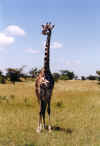Rafael & Edgar Monteiro
Safari in Kenia
Rafael & Edgar Monteiro
![]()
![]()
|
Home |
 |
Masai Mara From Lake Nakuru, we drove over five
hours to finally get to one of the most desired sites in Africa. The
Masai Mara. |
||||
| Next | ||||||
 Hotel |
 Typical tree of the África |
 In front of the room |
 Room |
 Walkway in the Hotel |
||
 Walkway in the Hotel |
 Monkey on the walkway |
 Monkey face |
 Lion |
 Lion |
||
 Lion |
 Lion |
 Lion |
 lioness |
 lioness |
||
 lioness |
 lioness |
 lioness |
 lioness |
 Hyena |
||
 Hyena |
 Gnus |
 Gnus and zebras |
 Eagle |
 Jabiru stork |
||
 Like a big chicken |
 Elephant |
 Elephant |
 Elephant |
 Elephant |
||
 Elephant |
 Elephant alcoholic food |
 Elephant alcoholic food |
 Cheeta |
 Cheetah |
||
 Cheetah |
 Hippos |
 Hippos |
 Hippos |
 Hippos |
||
 Crocus |
 Crocus |
 Crocus |
 Monkey |
 Giraffe |
||
 Giraffe |
 Giraffe |
 Giraffe |
 Antelope |
 Antelopes |
||
 Antelope |
 Antelope |
 Antelopes |
 Antelope |
 Kenya and Tanzania division |
||
Basic
Facts
Size: 1,672 sq kms
Province: Rift Valley
District: Narok
Geographical Location: South -
Western Kenya bordering Serengeti National Park, on the Tanzania border.
Altitude: 1,500-2,170m
Vegetation: Open grasslands with
patches of acacia woodland, thickets, and riverine forests.
Fauna: In the dry season
July-October) the reserve is a major concentration area of migratory herbivores
including approximately 250,000 zebra and 1.3 million wildebeest. There are also
gazelle, elephant, topi, buffalo, lion (Kenya's largest population), black
rhino, hippo, hyena, giraffe, leopard, and mongoose.
Bird Life: Prolific, including 53
birds of prey.
Visitor Facilities: Several lodges
and campsites.
Details
The Maasai Mara is Kenya's finest
wildlife sanctuary. Everything about this reserve is outstanding. The wildlife
is abundant and the gentle rolling grassland ensures that animals are never out
of sight. Birds too are prolific, including migrant birds and 57 species of
birds of prey.
The climate is gentle, rarely too hot and
well spread rainfall year round. When it rains, its is almost always in the late
afternoon or night. Between July and October, when the great wildebeest
migration is in the Mara the sensation is unparalleled.
The wildlife is far from being confined
within the Reserve boundaries and an even larger area, generally refered to as
the 'dispersal area' extends north and east of the game Reserve. Maasai live
within the dispersal area with their stock but centuries of close association
with the wildllife has resulted in an almost symbiotic relationship where
wildlife and people live in peace with one another.
The
first sight of this park is breathtaking. Here the great herds of shuffling
elephants browse among the rich tree-studded grasslands with an occasional
sighting of a solitary and ill-tempered rhino, Thompson's and Grant's gazelle,
topi and eland and many more species of plains' game offer a rich choice of food
for the dominant predators; lion, leopard and cheetah which hunt in this
pristine wilderness.
In the Mara River, hippo submerge at the
approach of a vehicle only to surface seconds later to snort and grumble their
displeasure. But this richness of fauna, this profusion of winged beauty and the
untouched fragility of the lanscape, are all subordinate to the Mara's formost
attraction, the march of the wildebeest.
After exhausting the grazing in
Tanzania's northern Serengeti National Park, a large number of wildebeest and
zebra enter Masai Mara around the end of June drawn by the sweet grass raised by
the long rains of April and May. It is estimated that more than half a million
wildebeest enter the Mara and are joined by another 100,000 from the Loita hills
east of the Mara. Driving in the midst of these great herds is an unimaginable
experience.
Whilst
the eyes feast on the spectacle, the air carries the smells, the dust and the
sounds of hundreds of thousands of animals. There is nowhere else on earth to
compare with this wildlife marvel. Once the Mara grass has been devoured and
when fresh rain in Tanzania has brought forth a new flush there, the herds turn
south, heading hundreds of kilometeres back to Serengeti and the Ngorongoro
plains. there the young are dropped in time to grow sufficiently strong to
undertake the long march north six months later.
Apart from the better known species,
there are also other rare ones that can be added to the visitor's checklist.
These include the roan antelope, the Bat-eared foxes and thousands of topi.
The combination of a gentle climate,
scenic splendour and untold numbers of wildlife makes the Masai Mara National
Reserve Kenya's most popular inland destination.